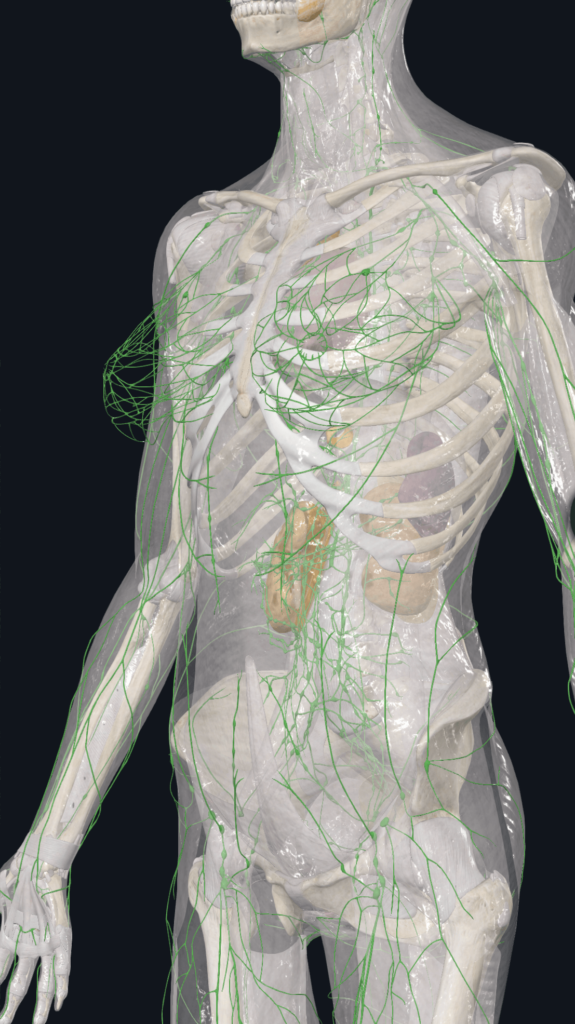
Your myofascial system is like a circuit board but instead of tiny metal roads running
everywhere, it’s more like millions of spider web-like tissues in your
body that wraps around your muscles, bones, and even holds your
organs in place. When you stretch or bend, your myofascial system
stretches and supports you and protects you from over-stretching to
the point of falling over. In other words, it tightens your muscles at just the right time to protect you from falling over. It’s almost a misuse of words to explain it
as if it’s separate from every other part of the body because it really
IS the body. We are basically walking fascia!
In this article we are going to discuss the
value of attaining flexibility, things that negatively affect our fascia,
how it relates to our nervous system and ways we can care for it.
Up close fascia looks like a bunch of random shaped strings that seem
to be connected everywhere. But at a distance fascia looks like a thin
sheet of plastic wrap. The kind you would seal your food in.
FASCIA AND FLEXIBILITY
When you move, your fascia stretches. Its really not some big mystery that keeping your fascia healthy involves you moving. When you try to hold
still your fascia creates stiffness in your muscles to keep you rigid. A good way to prevent
chronic pain in your body is by keeping your fascia warm, hydrated and stretched. So, take care
of your fascia and it’ll take care of you! Remember, regular exercise, hydration, and rest are
essential for healthy fascia. Keep your body running smoothly and feeling great!
ENEMIES OF FASCIA
Unfortunately, there are things that can harm your fascia and lead to problems like chronic
muscle fatigue and chronic pain. Some of the biggest enemies of fascia are lack of movement,
dehydration and chronic stress. When you’re stressed, your muscles tense up, and your fascia
can become tight and constricted, limiting your movement and causing discomfort. Think
about it, When you are stressed out you typically tighten up. If you are constantly tight, then
there is no way fluid from your body is hydrating your fascial tissues. Another enemy is
inflammation, which can make your fascia swollen and irritated which in turn will make you
not want to move so much because it hurts too much. Poor posture, repetitive movements, and
injuries will also damage your fascia, leading to stiffness and discomfort.
FASCIA, LYMPHATICS AND THE NERVOUS SYSTEM
Your fascia is closely connected to your nervous system, which controls movement and sensation throughout your body. Some studies suggest that there are over 250 million nerve endings that live throughout your fascial system! Nerve impulses travel through your fascia, sending signals to and from your brain. Tight fascia is a perfect set up for symptoms like tingling, numbness, or shooting pain. So then, keeping your fascia healthy and flexible and properly hydrated is essential for maintaining proper nerve function and preventing discomfort. Fascia is also hugely responsible for proper lymphatic drainage and flow. Held together by the cement of fascia are all the super tiny one-way valves that tunnel our lymph fluid back to our lymph nodes. This collaboration helps to remove toxins and waste products from the tissues. When the fascia is relaxed and flexible, it allows for optimal lymphatic flow. This is absolutely vital for anyone who wants to be free of chronic pain and have a symptom-free life.
Since fascia has such a direct connection to your lymphatic flow, over tight fascial tissues can lead to a range of health issues, including swelling, pain. By maintaining healthy fascia through regular
exercise, stretching, and manual therapies like massage, cupping, myofascial release and even Rolfing, one has a fighting chance of a longer and more pain-free existence.


